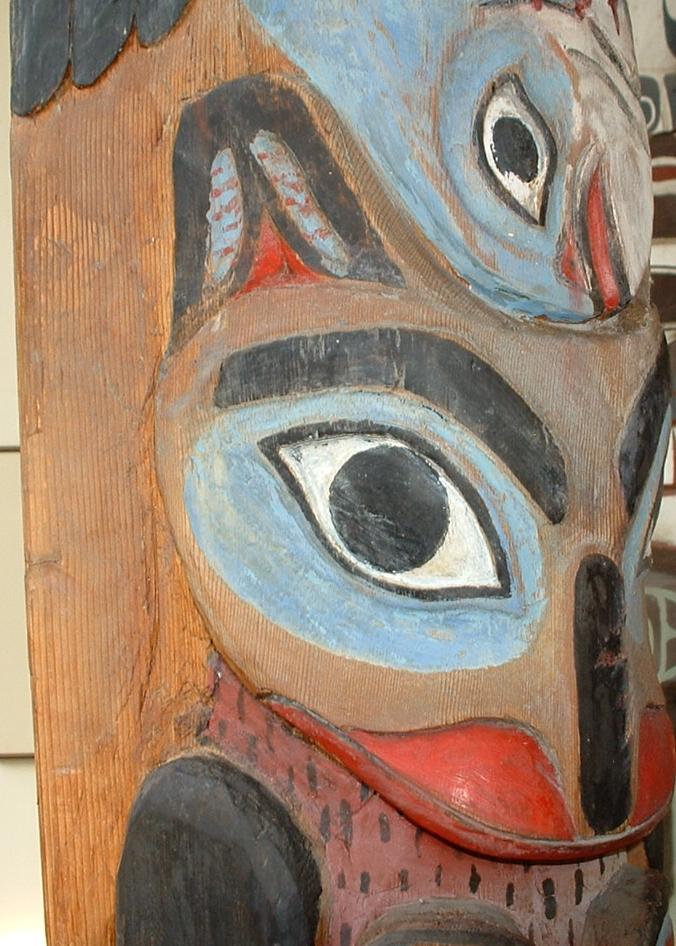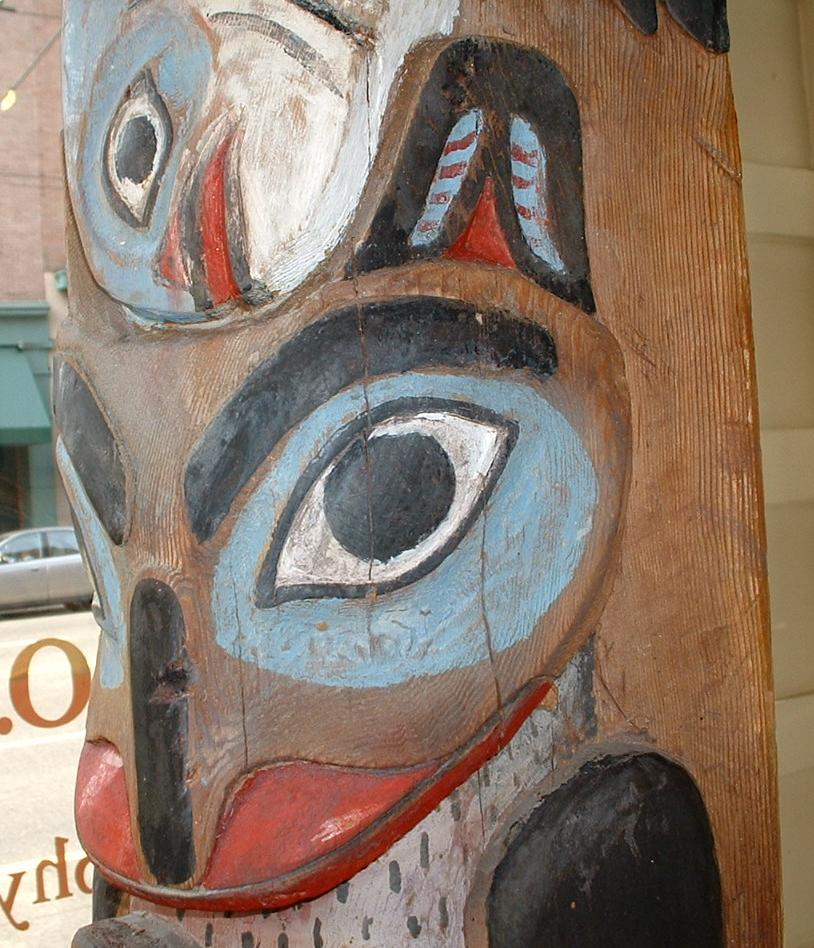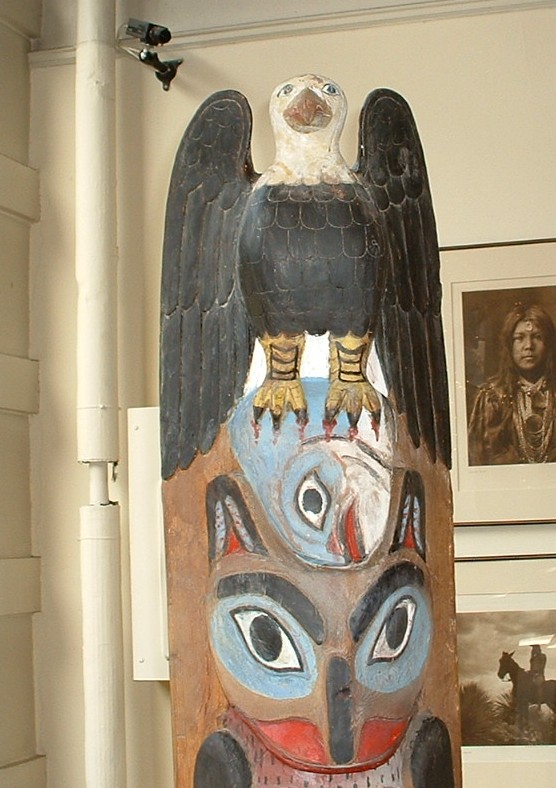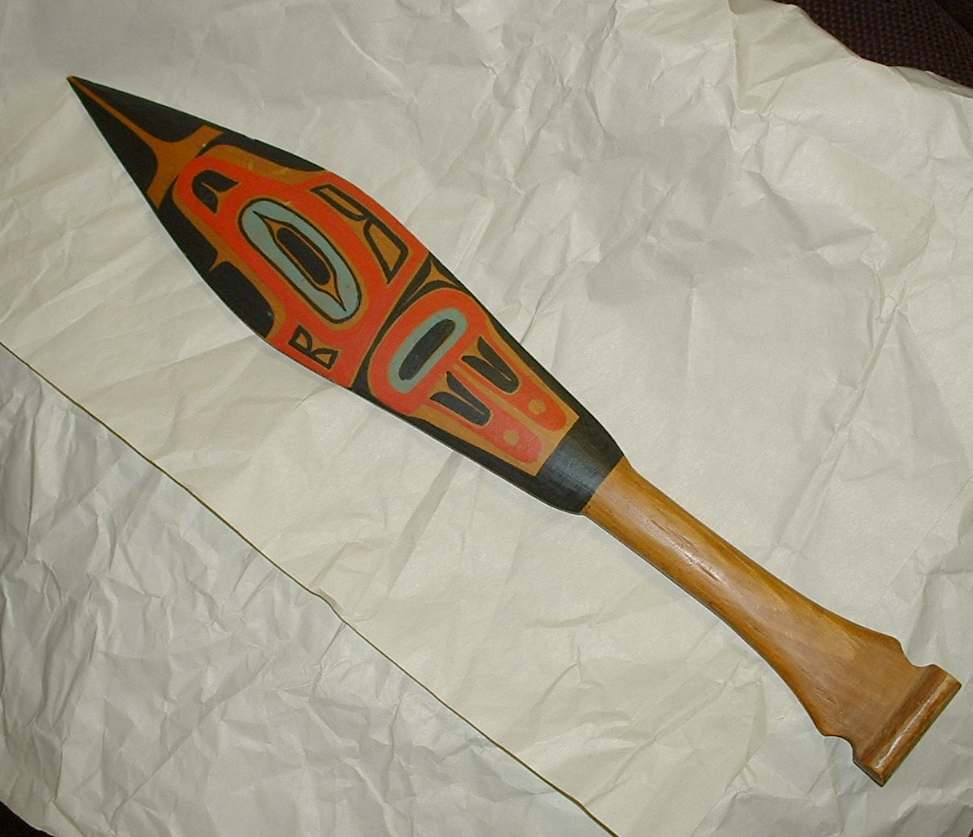Unsigned paddles such as this are not uncommon; is it possible they are by Eli Tait? See the Tait biography pages for a brief discussion, and photos of known Tait paddles. |
This pole has been identified by my friend C. S. as almost certainly carved by Jones Yeltatzie, 1897-1976. Yeltatzie was a Haida who lived in Ketchikan, and married into the Eaton families of Metlakatla. Another of his poles, described as a Haida creation myth, seems to indicate that the Eagle/Salmon/Bear theme is known to the Hadia as well as the Tsimshian and Tlingit. (Photos courtesy of Flury Co.) |
Gallery: Poles by Other Carvers |
This pole has been identified by my friend C. S. as almost certainly carved by Jones Yeltatzie, 1897-1976. Yeltatzie was a Haida who lived in Ketchikan, and married into the Eaton families of Metlakatla. Another of his poles, described as a Haida creation myth, seems to indicate that the Eagle/Salmon/Bear theme is known to the Hadia as well as the Tsimshian and Tlingit. (Photos courtesy of Flury Co.) |

Note that the wings are unlike Tait's or Mather's or Boyd's, rising above the shoulders. Nice carving of feathers. The pole shows some knowledge of traditional forms, more than Mather seems to have had; he often referred to himself as "mostly self-taught." The fish is not pierced through from the side; that would have been impractical, since the pole is hollowed on the back, and is relatively thin from the side. A similar fish is seen in an 1890 photo from Klukwan, a puppet or dance paddle. Note the nice traditional shape of the fish's carved eye-sockets. The ears are relief carved in the blue and red parts of the U, leaving the black dividing line raised, a totally traditional treatment. The form-line on the ear has good weight at the top, and tapers at the bottom. Ovoids in the paws, rather than faces. the eyes are correctly shaped, and well-carved. Note that as in Eli Tait's poles, there is a "super-base," a plain uncarved area at the bottom of the pole above the actual base Said to have been old when purchased in 1950; probably dates to 1930 or so, possibly earlier. About 5 1/2 feet tall. |




The ears show a good knowledge of traditional forms; the pole overall is more traditional-looking than most of the smaller souvenir totems. |

Unsigned paddles such as this are not uncommon; is it possible they are by Eli Tait? See the Tait biography pages for a brief discussion, and photos of known Tait paddles. |